Soil Biogeochemistry
Welcome to Soil Biogeochemistry
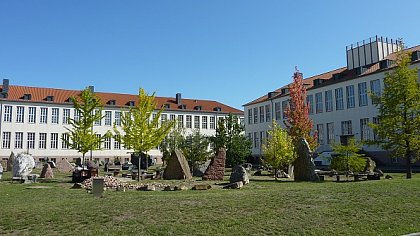
Soil biogeochemistry, Institute of agricultural and nutritional sciences (Photo: Bruno Glaser)
Soil biogeochemistry, Institute of agricultural and nutritional sciences (Photo: Bruno Glaser)
Department of Soil Biogeochemistry
The Professorship of Soil Biogeochemistry, headed by Prof. Dr. Bruno Glaser, focuses on the role of biochar and its environmental aspects in the context of sustainable management of natural resources.
Further research areas include the identification and quantification of soil processes, method development, the use of stable isotopes, and non-destructive and non-invasive analytical techniques. In addition, the research group addresses topics related to settlement history (e.g. Terra Preta, Raised Fields) and palaeoecology.
[ more ... ]
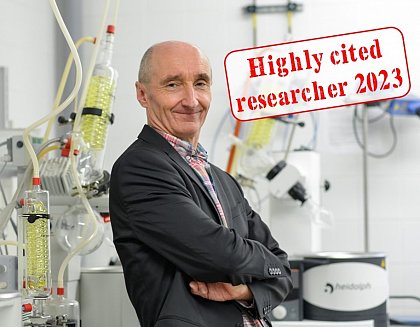
highly cited researcher Prof. Bruno Glaser, Foto: Uni Halle / Markus Scholz
highly cited researcher Prof. Bruno Glaser, Foto: Uni Halle / Markus Scholz
Contact
Sekretariat
room 3.3.31
Von-Seckendorff-Platz 3
06120 Halle (Saale)
How to reach us
phone: +49-(0)345-5522531
fax: +49-(0)345-5527116
postal address:
Martin-Luther-Universität Halle-Wittenberg
Naturwissenschaftliche Fakultät III
Institut für Agrar- und Ernährungswissenschaften
Professur für Bodenbiogeochemie
06120 Halle (Saale)


TwinSubDyn Summer School in Novi Sad
At the Summer School in Novi Sad, Serbia, young scientists had the opportunity at the beginning of June 2025 to learn about the current findings on organic soil and groundwater amendments, to share their research, and to improve their practical scientific working skill set.
[ more ... ]

Workshop about the “Shaman” of Bad Dürrenberg
Bruno Glaser presented biogeochemical findings about the “Shaman” of Bad Dürrenberg during a workshop in May 2025 with experts from over 30 different fields, which was held at the State Museum for Prehistory.
[ more ... ]

13.–14.05.25 Excursion Gartow and Gorleben
Employees of the department and students sampled down to the subsoil of a long-term field experiment in Lower Saxony in May 2025 to investigate vertical transport processes of biochar.
[ more ... ]

MyDiv field work in Bad Lauchstädt
The next phase of the MyDiv project on mycorrhizal fungi was kicked off on the long-term field experiment in Bad Lauchstädt together with the research departments from Jena and Leipzig in May 2025.
[ more ... ]

27.04.–02.05.25 EGU25 Vienna
Arthur Groß and Ryan Pearson presented their current findings on biochar’s effect on soil physico-chemistry, as well as biochar transport processes in soil at the EGU25 in Vienna in April 2025.
[ more ... ]

Energy efficiency in community-supported agriculture (SoLaWi) compared to conventional vegetable production
Community-supported agriculture (SoLaWi) promotes food security and sustainability. A study has shown that community-supported farms are more efficient in their use of energy, e.g. by using less fossil fuels and more of their own photovoltaics. Despite lower yields, they offer advantages such as more biodiversity, fewer food losses and secure markets. SoLaWi is therefore a promising approach to sustainable nutrition.
[ more ... ]

Terra Preta: Black earth - green climate?
It is a thousand-year-old product of chance: Terra Preta. The black, nutrient-rich soil was created in the Amazon region when indigenous peoples began to bury their rubbish in the ground. The secret of terra preta is the biochar it contains - which is taking on a new significance in the fight against the climate crisis.
[ more ... ]
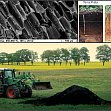
Die Wirtschaftsreportage
"Terra Preta": really a miracle cure for climate change?
[ more ... ]

Healthy soils are essential for survival
Multi-day conference in Halle “Soils - diverse & multifunctional” shows the broad spectrum of soil research.
[ more ... ]
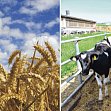
Reduced carbon footprint of milk during the conversion from conventional to organic milk production
If a dairy farm converts its production from conventional to organic, this can reduce its climate footprint by up to nine percent. This was demonstrated in a new study led by the Soil Biogeochemistry Group (MLU) and the Leibniz Institute of Agricultural Development in Transition Economies (IAMO), for which a dairy farm was accompanied in this process over two years.
[ more ... ]
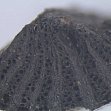
Aktiver Klimaschutz durch Einsatz von Pflanzenkohle
The use of biochar for active climate protection is increasingly becoming the focus of public attention. But in addition to its ability to store CO2 and other greenhouse gases in the long term, biochar has many other advantages for arable farming and animal nutrition. For NDR, Prof. Bruno Glaser talks about the use of biochar for climate protection and its many agronomic benefits.
[ more ... ]
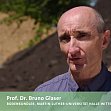
Terra preta: Schwarze Wunder-Erde aus Franken
Many gardening enthusiasts swear by “terra preta”, black soil, which is particularly fertile. It was discovered in the Amazon at the end of the 19th century. It was created there 2000 years ago from human waste. Aaron Saßmannshausen from Upper Franconia produces “terra preta” himself - on a large scale. The basis: horse manure, plant waste and - most importantly - charcoal.
[ more ... ]

Making of TerraX
the history of Terra Preta (TerraX
05.03.2020)
[ more ... ]
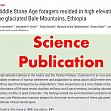
Science Publication: Middle Stone Age
foragers resided in high elevations of
the glaciated Bale Mountains, Ethiopia
Studies of early human settlement in alpine environments provide insights into human physiological, genetic, and cultural adaptation potentials. Although Late and even Middle Pleistocene human presence has been recently documented on the Tibetan Plateau, little is known regarding the nature and context of early persistent human settlement in high elevations. Here, we report the earliest evidence of a prehistoric high-altitude residential site.
[ more ... ]
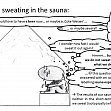
Sauna, sweat and science II – do we sweat what we drink?
Inspired by a previous ‘Sauna, sweat and science’ study [Zech et al. Isot Environ Health Stud. 2015;51(3):439–447] and out of curiosity and enthusiasm for stable isotope and sauna research we aimed at answering the question ‘do we sweat (isotopically) what we drink’?
[ more ... ]
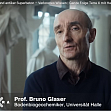
Lost knowledge (1/2) - with Harald Lesch
Prof. Harald Lesch goes in search of knowledge that has been forgotten. He comes across knowledge that could solve today`s problems.
The search for an 8000-year-old super fertilizer takes the “Terra X” team to the Amazon region. The indigenous people seem to have had a recipe for making the infertile soil in the Amazon fertile. Even today, Terra Preta acts as a long-term super fertilizer. Fertile soil from recycled waste - this could be a solution to the many problems of modern agriculture
Translated with DeepL.com (free version)
[ more ... ]
Up
























